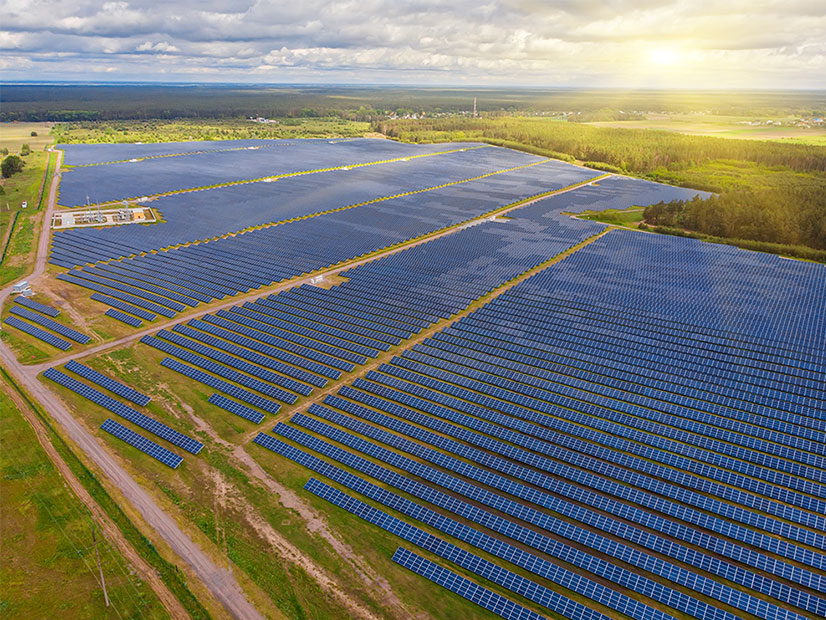An Internal Revenue Service notice issued Wednesday will extend the time that wind and solar developers have to complete their projects and still qualify for either the production tax credit or investment tax credit.
The notice (2021-41) extends the “safe harbor” period for both wind and solar projects to six years for projects that began construction between 2016 and 2019, and to five years for projects that began construction in 2020. For example, a solar project started in 2017 would be eligible for the ITC as long as it went online no later than 2023; one started in 2020 would have to go online by 2025.
To qualify for the credits, a developer must either start and continue work on a project in a specific year (the physical work test) or pay or incur 5% or more of the total cost of the project during that year (the safe harbor test) and then show continual construction or effort on the project.
The “continuity safe harbor” — the time between start and finish of a project — has been reset multiple times, with a previous COVID extension to five years in 2020.
With the new extension, “[t]he Treasury Department and the IRS recognize that regional, national, or global circumstances due to the COVID-19 pandemic have continued to cause delays in the development of certain facilities eligible for the PTC and the ITC. These extraordinary delays have adversely affected the ability of many taxpayers to place facilities in service in time to meet” the tax credit requirements, the notice said.
Developers and energy industry trade groups were quick to praise the extension and the regulatory certainty they said it would provide.
“As with all of American society, the solar industry faced unprecedented challenges during the COVID-19 pandemic,” said Dan Nelson, vice president of tax for California-based developer 8minute Solar Energy. “This additional time to complete projects ensures thousands of megawatts under development will continue and deliver on the jobs and economic value of these projects, while also moving us towards our national clean energy goals.”
Heather Zichal, CEO of the American Clean Power Association, said the safe harbor extension would “ensure additional wind and solar projects have the support they need to move from concepts on paper to steel in the ground. This tax guidance provides the regulatory certainty and predictability to ensure the clean energy projects across the country can be developed to reach the emissions targets we need to achieve.”
“The pandemic disrupted supply chains, shipping and construction operations, permitting processes and financing timelines,” said Abigail Ross Hopper, CEO of the Solar Energy Industries Association. “Without clarity on safe harbor rules from the IRS, some of these solar projects, and the local economic benefits they bring, would not have made it across the finish line.”
Executive Branch Leverage
The notice also offers developers more flexibility for demonstrating continuity of work on a project. Previously, if a project started physical construction, it had to show “continuity of work,” while a project using the 5% safe harbor had to show “continuity of effort,” such as signing contracts for equipment, pursuing permitting or beginning construction.
Now developers can show continuity by use either of two tests, continuity of work or effort, regardless of whether they started actual physical construction or used the 5% safe harbor.
The PTC was originally enacted in 1992, and the ITC, in 2006, to offset the high upfront costs of early wind and solar projects, respectively. The ITC has been particularly critical for the growth of the solar industry, driving tax equity financing for projects and growth rates over 50% per year, according to a SEIA fact sheet.
The ITC currently stands at 26% for residential and commercial solar projects and is scheduled to step down to 22% in 2023. The PTC is $18/MWh through the end of 2021, according to the Energy Information Administration,
Both credits have faced repeated phase-outs, with heavy industry lobbying winning last-minute saves in Congress. The omnibus bill passed in December 2020 extended the PTC one year and the ITC two years. President Biden’s American Jobs Plan proposes a 10-year extension and phase-down of an expanded, direct-pay ITC and PTC. The tax credits were not included in the bipartisan infrastructure package Biden announced on June 24.
Industry analyst ClearView Energy Partners sees the safe harbor extension “as another example of how the executive branch can leverage its considerable vested regulatory powers to support a green transition even as lawmakers on Capitol Hill wrestle with committing President Joe Biden’s American Jobs Plan to legislative text.”


